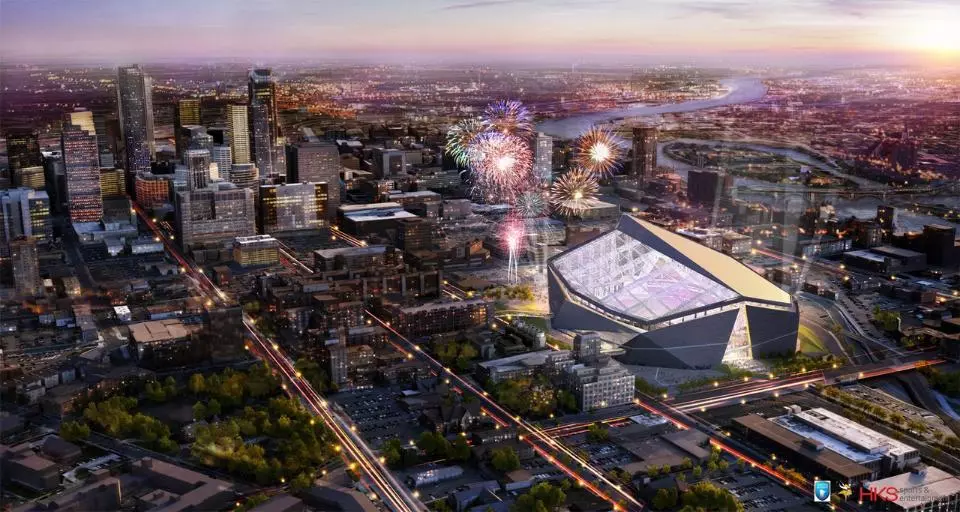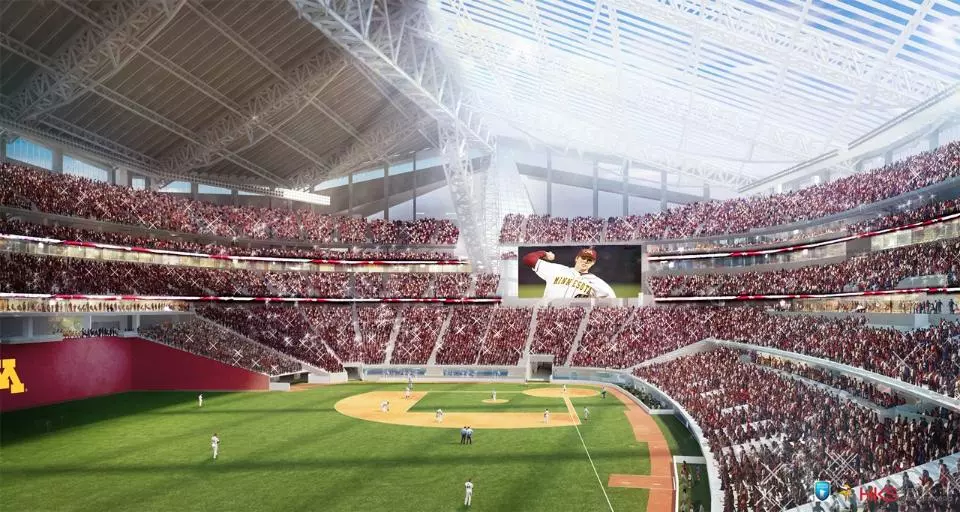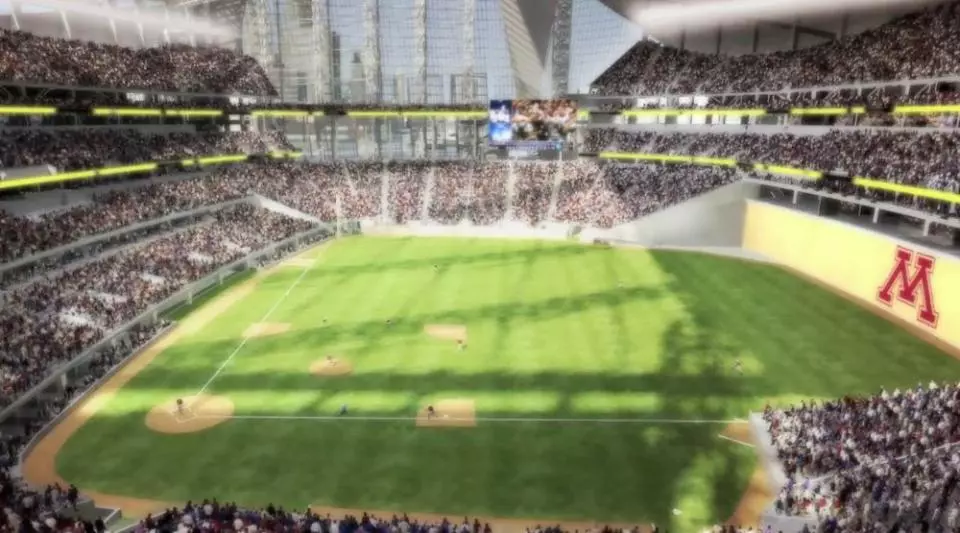The Minnesota Vikings American football team has announced the final design for a new stadium to built in the Minneapolis city center that will feature the world’s largest transparent roof. This feat will be achieved using state-of-the-art polymer instead of glass to resist the extremes of Minnesota’s climate, while providing views of the city skyline and a sense of openness for fans and players alike.
Due to its Siberia-like climate, Minnesota isn't exactly the best place in the world for outdoor sports. Its winters are marked by blizzards and arctic cold, while the summers are broiling stretches of windless days punctuated by massive thunderstorms. Spring and autumn are nice, but they each last an hour and a half, so can be safely ignored.

In the past fifty years Minnesota has built a number of indoor and convertible stadiums to get away from the weather, but the heavy snowfalls ask a lot of their expansive domes, such as in December 2010 when the Metrodome in Minneapolis tore and collapsed in spectacular fashion when the weight of the snow became too great.
The plans for the new multi-purpose stadium, which will replace the Metrodome, were announced on Monday by the Minnesota Vikings American football team, the Minnesota Sports Facilities Authority (MSFA) and HKS Sports & Entertainment Group.
The stadium is part of a decades long redevelopment program for the Minneapolis city center and the waterfront area in particular. Seating 65,000 and budgeted at US$975 million, the designers say it boasts an “authentic structure influenced by its Minnesota location” and is marked by a soaring prow and huge doors facing the city skyline that open and are tall enough to let a Star Wars AT-AT walk through comfortably. The purpose of the design is to reflect the city’s climate, geography, history, and civic architectural and technological heritage.

"The design reflects the true story of the Minnesota community with its international style driven by climatic response and energy conservation,” says Bryan Trubey, design principal, HKS Sports & Entertainment Group. "The interior volume makes it the most versatile, multi-use building in the country with the most advanced digital age technology.”
The highlight of the stadium is the largest transparent roof in the world. It does not open, but is sloped to improve load bearing. It will cover the southern half of the stadium and will be made of ethylene tetrafluoroethylene (ETFE) instead of glass. This transparent polymer transmits more light and insulates better than glass for only one percent of the weight and costs 24 to 70 percent less. It can bear 400 times its own weight, can be repaired by welding and has a service life of 50 years. However, it’s also a good noise transmitter and needs to be made up of several inflated layers. It’s already used in other stadiums and for the domes of the Eden Project in Cornwall, UK, and is part of the designer's intent of lowering operating costs.

The Viking Stadium is planned as a year-round facility to host, according to the announcement, more events than any other large stadium in the world, yet brings the fans closer in during football games. "Vikings fans will be closer to the action than any stadium in the country,” said Vikings Owner and Chairman Zygi Wilf. "The combination of operable end walls with a clear roof and large windows throughout the facility will give fans the opportunity to experience the best of both worlds: an outdoor feel with protection from the elements.”
In addition, the stadium is intended to blend into the neighborhood instead of looking like a spaceship that's just landed. "We wanted a design that encourages a connection into the neighborhoods, that will spur economic development and that will act as a destination rather than a barrier,” said Michele Kelm-Helgen, Chair of the Minnesota Sports Facilities Authority.
The next step is for the design to be submitted to the Minneapolis Stadium Implementation Committee and the City of Minneapolis for review. The groundbreaking for the new stadium is planned for October with the demolition of the Metrodome it replaces slated for 2014. The first Viking game at the stadium is slated for the start of the 2016 season.
Source: Minnesota Vikings
































